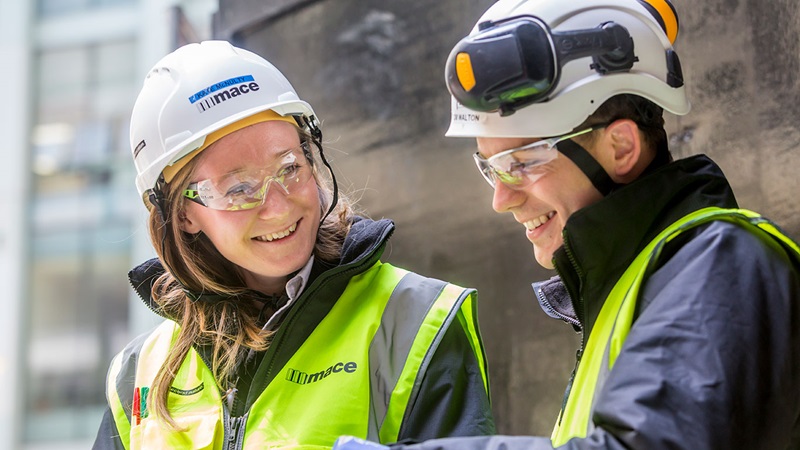Big infrastructure, bigger benefits: elevating skills and supply chains beyond project delivery
As America embarks on a decade of transformational infrastructure investment, how can we redefine project delivery to create enduring social and economic value?
The opportunities and implications are especially significant in big infrastructure. With investments in the billions, millions of stakeholders and decade-plus timeframes, these programs have the power to transform lives and livelihoods by measures greater than any single community, jurisdiction, organization, or interest.
Innovating infrastructure delivery
It starts with the way we deliver infrastructure programs of scale. Given multivariate complexities, such projects benefit from a partnership model that facilitates end-to-end integration and collaboration across the supply chain. By establishing one team, a common vision and shared responsibility in the early stages, the approach sets the stage for enduring benefits.
As the only major consultant involved from the beginning of London’s candidacy for the 2012 Olympics, Mace founded this historic partnership model to deliver the Olympics infrastructure and legacy programs that continue to benefit East London today.
It was an innovation that redefined how big projects should be done. Delivered a year ahead of schedule and 10 percent below budget—inclusive of the largest environmental cleanup ever undertaken in Europe, plus training and development of 40,000 workers and supply chain partners—it remains the most successful and sustainable delivery of such scale.
Prioritizing legacy and learning
Legacy and learning are key factors in the success of megaproject delivery partnerships, not only from the perspective of on-plan performance, but also in ensuring sustainable outcomes for stakeholders. Current examples include the Metrolinx GO and Subways Expansion in Toronto—Canada’s largest transit program—and Peru’s national reconstruction and resilience program.
For these and other projects around the world, we serve a greater obligation to develop and elevate professional and business capabilities of the project organization and local supply chain as central to the partnership. Our Legacy Learning and Knowledge Transfer Program emphasizes open innovation, knowledge sharing, training and development as core deliverables that yield communitywide growth opportunities.
In addition to advancing skills and business development, structured learning enables more effective and inclusive participation of stakeholders, resulting in more fully considered solutions, better buy-in and cooperation to improve project performance.
Beyond the project, the ultimate aim is to leave the infrastructure organization and local supply chain with the knowledge and experience they need to deliver the next big program. So, we prioritize the community’s self-sufficiency and continuing legacy to unlock greater rewards from the additive social and economic value we create—such as improved public safety; access to services like education and healthcare; increased property values; growth in local business development, productivity, earnings and investment; and higher income opportunities for families.
Adding exponential value
The potential is significant. According to the World Bank, $1.00 of public infrastructure investment generates $1.50 of economic value, with bigger multiples realized during economic contractions. This reflects the direct benefit of jobs, goods and services needed to deliver the projects.
The stakes are even higher for major transit programs. According to research by the American Public Transit Association, such investments yield returns of four to five times every dollar invested, including regional economic stimulus effects and broader gains in productivity.
It’s our view that workforce and supply chain development add further exponential returns on these investments, particularly as we expand equitable opportunities among minority, disadvantaged, and underserved populations. While it’s difficult to sum up the cumulative socioeconomic value of these efforts, the positive correlation to community and business development is clear.
Digitally empowerment
Further, by leveraging digital intelligence and predictive analytics across the framework of People, Organization, Processes, Information and Technology (POPIT), we continue to raise the bar on delivery standards, performance and outcomes beyond the scope of project, which also contributes to the advancement of our industry.
For example, digital technologies played a huge part in Peru’s recovery program to mitigate $5 billion in infrastructure losses from catastrophic floods that affected a million people. Given the added challenge of the global pandemic, cloud computing and connectivity were especially critical to safely engage, develop and mobilize the local workforce, communities and suppliers needed to build 74 schools, 18 hospitals, and 40+ flood defense projects. To accelerate delivery, we trained local construction contractors on Building Information Modeling (BIM), which proved transformational for the building industry. BIM use in Peru grew from 20 to 40 percent in three years, and was adopted as a national standard that will benefit developments for years to come.
Redefining infrastructure value
This is one of 1,400 active projects and thousands more delivered that comprise a broad body of knowledge and beneficial experience we share with clients in every sector of the global economy. Our history delivering major programs on the world stage—while elevating opportunities along the way—reflects the purpose and commitment we deliver for partners and communities. We redefine big infrastructure ambitions to achieve greater value and outcomes for everyone.
Legacy is the ultimate measure of success that differentiates Mace as the definitive delivery partner for infrastructure programs around the world. Learn more about our delivery partner principles and experience by clicking here.











